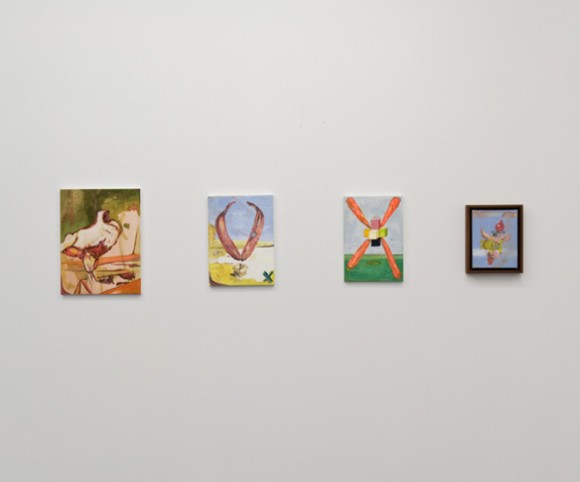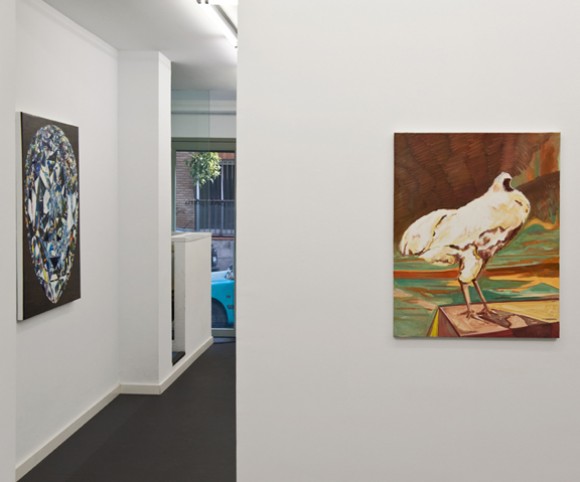Rasmus Nilausen | Still
The title of the exhibition refers to the various meanings of one of the words in the definition ‘still life’. These include ‘calm’, ‘tranquillity’, but also ‘something that continues to take place’, or, ‘yet’. With this word, Rasmus Nilausen (Copenhagen, 1980) covers many of the fundamental aspects of his work, from the different genres present in his paintings to the fact he returns, once again, to painting still lives, or the artistic will to continue with the investigation of figurative painting’s language and the traditional medium of oil on canvas.
Still life is chosen as the main subject for his paintings due to its apparent humbleness, as well as its fundamental, ever-present role in the history of painting. Furthermore, dealing with each of its elements separately allows the artist to broaden his operating range, both visually and conceptually. It is almost like a cut and paste of multiple personal, cultural, or simply casual references, which are superimposed on the canvas.
The grouping of food and objects allows for strange combinations where each element gains new meaning (for example, the carrot is a recurring element which for the artist is a symbol of motivation), as they are organised in a way that reminds us of spaces in metaphysical paintings or Suprematist compositions, and incorporate elements loaded with topicality or irony (a lamppost, a chessboard, a Pikachu). These in turn coexist on the canvas with accidents and chance, blots and colour stains, accidental discoveries that the painter integrates into the work.
Worth noting are also the works about Mike the Headless Chicken, who during the 40s of the past century was an object of attention for Time magazine, due to having survived 18 months after being decapitated before choking to death in a motel room.
Among the different themes, special attention is to be paid to the series dedicated to diamonds, which Nilausen has now been working on for some time. In some cases, these are real and well-known stones with a story of their own, famous even, while others are his exclusive creations. The diamonds are repeatedly presented in an oval shape reminiscent of a portrait, and in a way this is what they are. That same oval shape led him to research into the recurring presence of the Harlequin pattern, a rhombus or diamond shape, which appears repeatedly throughout the history of painting, and since then also in his own.







 sending...
sending...